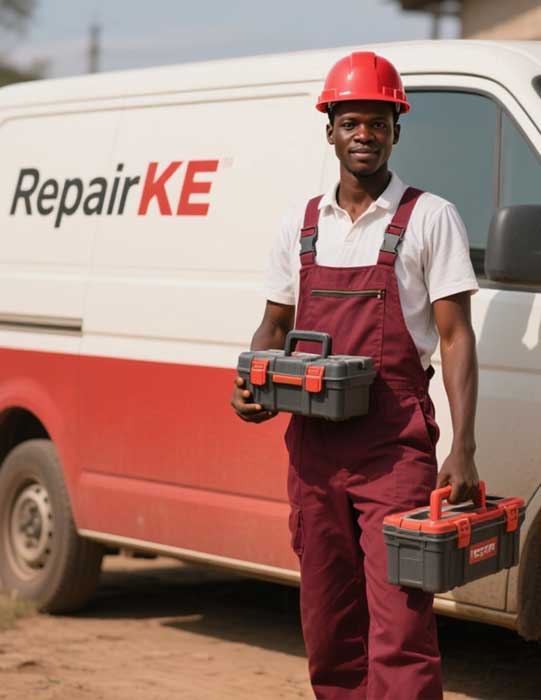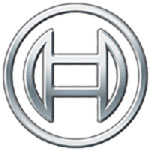
Washing Machine Bearing | Purpose & Symptoms of Breakage & Price in Nairobi
Washing machine bearings are critical components that ensure the smooth operation of the appliance. When these bearings fail, they can cause significant disruptions, from noisy operation to complete machine breakdown. This article explores the purpose of washing machine bearings, the symptoms of their breakage, and the associated repair costs in Nairobi, as provided by Repair.co.ke, a trusted appliance repair service in Kenya.
Purpose of Washing Machine Bearings
Washing machine bearings are metal rings containing small metal balls that support the rotation of the drum. Located at the back of front-loading washers or the bottom of top-loading washers, they enable the drum to spin smoothly with minimal friction. Their primary functions include:
- Supporting Drum Rotation: Bearings ensure the drum rotates efficiently during wash and spin cycles, maintaining the machine’s performance.
- Reducing Friction: By allowing smooth movement, bearings minimize wear on other components, such as the motor and drum shaft.
- Enhancing Stability: Properly functioning bearings reduce vibrations, ensuring the machine operates quietly and remains stable during high-speed spin cycles.
Bearings are typically made of steel or ceramic and are protected by seals to prevent water ingress. However, they are subject to significant stress due to constant rotation, making them prone to wear over time.
Symptoms of Washing Machine Bearing Breakage
Bearing failure is one of the most common issues in washing machines, particularly in older models or those subjected to heavy use. Recognizing the symptoms early can prevent further damage to the appliance. Common signs of bearing breakage include:
Loud Noises During Operation
A failing bearing often produces grinding, rumbling, or knocking sounds during the spin cycle. These noises, sometimes described as resembling a “plane taking off,” indicate that the bearings are worn or damaged. In early stages, a squeaking sound may suggest insufficient lubrication, while a grinding noise typically signals advanced wear.
Excessive Vibration or Shaking
Damaged bearings can cause the drum to wobble or move excessively, leading to increased vibration during operation. If the inner drum moves more than a few millimeters when manually spun, or if the machine shakes abnormally, the bearings may be compromised.
Water Leaks
Worn bearings are often accompanied by damaged tub seals, allowing water to leak from the drum. Puddles beneath the machine or water marks on the floor are common indicators of this issue.
Grease or Rust Marks on Clothes
As seals fail, water can enter the bearings, washing away lubrication and causing rust. This may result in grease or rust spots on laundry, a clear sign of bearing deterioration.
Reduced Spin Efficiency
A damaged bearing may cause the drum to rotate at a slower rate, even on high-speed settings. This can leave clothes wetter than usual after the spin cycle, indicating reduced efficiency.
Visible Rust or Damage
Inspecting the back panel of the machine may reveal rust around the motor or bearing housing, confirming bearing failure. Small plastic or metal fragments in the drum or on clothes may also indicate bearing disintegration.
If these symptoms are ignored, continued use can damage the drum, shaft, or other components, leading to more costly repairs or the need for a new machine.
Causes of Bearing Breakage
Several factors contribute to bearing failure, including:
- Overloading: Exceeding the machine’s load capacity (typically 40-50% of failures) puts excessive strain on bearings, causing premature wear.
- Water Ingress: Worn or damaged seals allow water to enter, leading to rust and corrosion.
- Lack of Lubrication: Insufficient or washed-away lubrication increases friction, accelerating wear.
- Harsh Detergents: Abrasive detergents with zeolites or phosphates can degrade seals, exposing bearings to water.
- Poor Maintenance: Failure to clean the machine or run maintenance cycles allows dirt and debris to accumulate, increasing friction.
- Manufacturing Defects: In rare cases, faulty bearings from production may fail early, particularly in older models.
Repair Process by Repair.co.ke
At Repair.co.ke, our certified technicians follow a meticulous process to diagnose and repair bearing issues:
- Diagnosis: We inspect the machine, focusing on the drum, bearings, and seals, and test it during a spin cycle to confirm bearing failure.
- Disassembly: The machine is carefully disassembled to access the drum and bearings, which may require splitting the outer tub in some models.
- Replacement: Faulty bearings and seals are replaced with high-quality, manufacturer-approved parts. We ensure proper lubrication and alignment to prevent future issues.
- Reassembly and Testing: The machine is reassembled, and a full cycle is run to verify smooth operation and no leaks or noises.
- Preventive Advice: We provide guidance on proper load sizes, detergent use, and maintenance to extend the machine’s lifespan.
Price of Bearing Replacement in Nairobi
The cost of replacing washing machine bearings in Nairobi varies based on the machine’s make, model, and the extent of the damage. Based on industry data and Repair.co.ke’s pricing:
- Parts Cost: Bearings and seals typically cost between KSh 500 and KSh 2,000, depending on the brand (e.g., LG, Samsung, Bosch).
- Labor Cost: Professional installation, which involves significant disassembly, ranges from KSh 5,000 to KSh 15,000. The repair can take 1-3 hours, depending on the technician’s experience and the machine’s design.
- Total Cost: On average, bearing replacement costs between KSh 6,000 and KSh 20,000 in Nairobi. For high-end or complex models, costs may reach KSh 25,000 if additional parts (e.g., drum or shaft) are damaged.
Some modern washing machines have sealed drums, making bearing replacement impossible. In such cases, replacing the entire tub assembly or the machine may be necessary, significantly increasing costs.
Is It Worth Replacing Bearings?
The decision to replace bearings depends on the machine’s age and condition:
- Newer Machines (1-5 years): If the machine is relatively new and otherwise in good condition, bearing replacement is often cost-effective compared to purchasing a new washer (KSh 30,000–KSh 100,000).
- Older Machines (5+ years): For older models with multiple issues, replacing the machine may be more economical, especially if repair costs exceed 50% of a new unit’s price.
- DIY vs. Professional Repair: While DIY replacement can save on labor costs, it requires advanced skills and tools. Incorrect installation can damage the machine further, so professional repair is recommended for most users.
Preventive Maintenance Tips
To extend the life of washing machine bearings, Repair.co.ke recommends:
- Avoid overloading the machine; check the manufacturer’s load capacity label.
- Use mild, high-efficiency (HE) detergents to protect seals and bearings.
- Run a monthly maintenance cycle with a washing machine cleaner to remove debris.
- Inspect and replace seals promptly if leaks are detected.
- Ensure the machine is level and stable to reduce vibrations.
- Schedule annual professional maintenance to check bearings and other components.
Contact Repair.co.ke
If your washing machine exhibits signs of bearing failure, prompt repair is essential to avoid further damage. Repair.co.ke offers expert bearing replacement services across Nairobi, using genuine parts and transparent pricing. Visit www.repair.co.ke to schedule a diagnosis. Our team is committed to restoring your washing machine’s performance efficiently and affordably.
Repair.co.ke
Nairobi, Kenya




